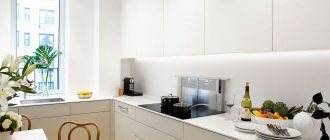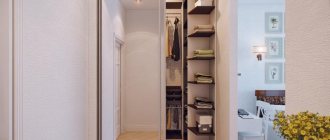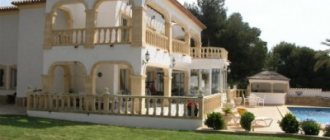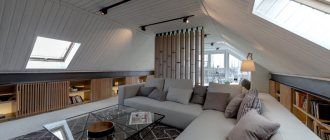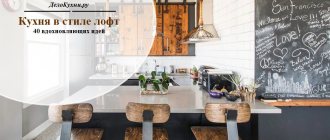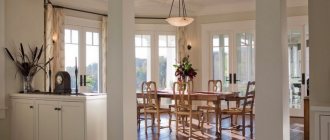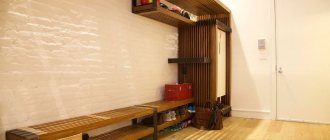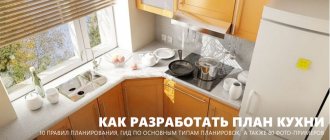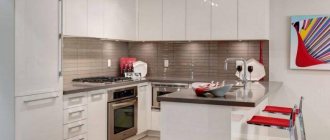Rustic style in the interior - uncompromising naturalness
This mix of American country music and Russian log hut began to actively gain popularity in the middle of the last century, rushing to the aid of residents of large cities tired of the abundance of plastic and synthetic gloss. By purchasing suburban buildings, people received the long-awaited opportunity to equip them with purely rustic, somewhat “fairy-tale” comfort, without giving up the usual benefits of civilization.
Rustic style in the interior
≡ Contents:
- — The main idea of the style
- — Features of rustic style
- — Materials and finishing
- — Windows and doors
- — Style furniture
- — Colors in design
- — Textiles
- — Decor
- — Interior design in rustic style – photo
The main idea of the Rustic style
The fundamental idea of the rustic interior style is the successful combination of natural materials, subject to minimal processing, with the latest technological progress.
Brutal and “primitive”, but at the same time fascinatingly cozy, this interior becomes a real oasis of peace and quiet for a metropolitan resident tired of constant movement and bustle.
How is rustic different from country?
As you may have noticed, European rustic and American country interiors are very similar. However, both directions also have significant differences , knowing which you will never confuse them:
- Country music involves decorating a room exclusively in retro style. Rustic allows for modern details.
- Country welcomes a variety of decor and a variety of textiles, while rustic strives for free space in the room and a minimum of accessories.
- Country is associated with a rich palette and bright, rich colors, rustic is distinguished by muted and natural shades.
Style Features
The rustic style in the interior is unusual in that, by all available means, it strives to emphasize the “wild”, untouched beauty of nature, its harmony and calming effect on the human body.
The interior, decorated in accordance with this design direction, has the following distinctive features:
- use of exclusively natural materials in finishing;
- ubiquitous presence of natural wood;
- beam ceiling;
- stone or plank floors;
- natural, natural colors in decoration;
- natural textiles;
- the presence of a stylized fireplace;
- decor made from natural materials;
- a penchant for minimalism in the environment;
- close proximity of brutality and grace.
Rustic style of a wooden house
The rustic style is often used in the design of wooden houses, since it is in them that the full potential of the direction is revealed: in such a house one feels warmth, comfort and maximum closeness to nature. Wall decoration does not hide valuable space, because, as a rule, there is a lot of it.
Decorating the attic Source twitter.com
If there are no finished beams on the ceiling, it is dismantled and the rafter structures are left bare. They can be whitewashed if you want to visually raise the ceiling level.
Decorating rooms in the house Source cmade.ru
Materials and finishing
The main finishing material for creating a rustic interior is wood. It is used literally everywhere:
- massive ceiling beams;
- doors and window frames;
- boards or logs - for wall cladding;
- the same boards or their imitation - on the floor;
- furniture - made of natural wood;
- the interfloor staircase is often also made of wood.
Often wood in such an interior is adjacent to natural stone. Moreover, this is not smooth marble or granite, but untreated slate or sandstone. They cover wall surfaces, decorate the hearth, and lay out the floors.
It is difficult to do without metal in any interior design. In the rustic style, it is used mainly in the form of bronze or brass, and quite often, with a patina effect. These are furniture fittings, fasteners, chandeliers, candlesticks.
Selection of houses
In the interior of country buildings, rustic looks especially harmonious. A solid and simple finish in the form of wide boards or lining fits perfectly into the design of a veranda at the dacha. You can choose wicker furniture or use forged items that look advantageous against the background of stone walls. Silk textiles with floral or plant patterns will help add air to the atmosphere and soften the rough color of the style.
The photo shows the design of an open country veranda in a rustic style.
The terrace is decorated in a monochrome gray-brown color scheme. Stone and wood are used in large quantities for finishing. The terrace is often equipped with a stove, barbecue or summer kitchen.
Furniture
When creating an interior in a rustic style, purchasing furniture will perhaps be the most difficult stage.
Demonstratively rough, rustically simple, but of good quality, made of natural wood - this is not easy to find in ordinary stores...
Although in modern rustic interiors you can often find standard options. However, it is better to order the necessary pieces of furniture according to your own design.
For the rustic style the following are relevant:
- massive dining tables;
- simple stools;
- high back chairs;
- village shops;
- open shelves;
- wicker furniture;
- armchairs and beds with frames made of logs;
- cabinets made of thick tree trunks;
- antique massive chests and chests of drawers.
Sofas and armchairs imply exclusively natural upholstery, without synthetic impurities.
Colors
Even without using solid wooden tables, you can make the interior a little rustic: just choose a neutral, natural color scheme. All shades of wood and earth are suitable, a white base and the absence of bright color accents, except for small splashes of greenery. In the photo below, only the basket and bowl on the coffee table directly refer to rustic, but the atmosphere can be read perfectly.
Decor
Decor in a rustic style includes driftwood, branches, saw cuts, roots and bark of trees, unusual stones and dried flowers.
From the more familiar:
– earthenware and wooden dishes; – rough frames for mirrors made of patinated boards; – saw cuts with a beautiful natural pattern as panels or coasters; – original forged chandeliers or lamps made from natural materials.
All new items of technological progress are carefully disguised behind stylized surfaces, without disturbing the original harmony. To soften the demonstrative roughness of the rustic style, elegant details must be added to the interior, for example, dishes and cutlery, vases or lamps.
Gate and fence in neo-Russian style
Architect F.O. Shekhtel based on sketches by M.A. Vrubel 1904-1905
This fence goes around the vast area of the former Usoltsev private psychiatric hospital, which occupies a vast area at the corner of March 8th Street and Stary Petrovsko-Razumovsky Proezd. Despite its auxiliary purpose, this building, without exaggeration, can be considered one of the outstanding monuments in the neo-Russian style or the national romantic version of Art Nouveau. The fence worthy complements the group of neo-Russian buildings erected according to the designs of F.O. Shekhtel in the early 1900s. At the same time, the unusual and unique architectural design of the fence is caused by the unusual materials used for its construction. Instead of the usual metal lattice, the clinic's fence is made of wooden panels in stone pillars.
The general appearance of the fence resembles the fortress walls of an ancient Russian city. The fence pillars, slightly widening at the bottom and therefore seeming especially monumental, are similar to the walls of ancient Kremlins. This similarity is especially obvious in the appearance of the tower, located at the corner of two streets. Its square volume ends with a two-tiered tent. Above the lower, scaly, octagonal part rises the second part, square in plan. Instead of the traditional combination of volumes for Russian architecture - an octagon on a quadrangle, here Shekhtel used the opposite - in the form of a quadrangle on an octagon. The transition from an octahedron to a square is made in the form of risalits with keel-shaped arched niches, representing something like icon cases.
Fence posts with cut corners have triangular ends and slightly widen at the base. Like the wooden panels of the fence, they are decorated with ornaments in the neo-Russian style.
The architectural design of the entrance to the clinic also goes back to the pre-Petrine artistic tradition. It repeats the combination of two entrance arched openings, often found in Ancient Rus': a large one, which served as an entrance gate, and a small gate for pedestrians.
The epic beauty of the architecture of the entrance part is emphasized by the heroic enlargement of architectural forms.
It is reinforced by a number of techniques characteristic of the neo-Russian style: the asymmetry of the roof slope above the gate, the widespread use of cut corners in the fence panels, the triangular ends of the fence posts and the roof of the former gatehouse with windows now installed in the form of stylized hipped towers. Squares, grouped in twos, threes, and in the form of vertical stripes, are widely used as an ornament in the architecture of the fence. https://zen.yandex.ru/drevnerusskii_dom
Forms between brutality and elegance
When creating a rustic style, it is important not to overdo it with rough forms, which can turn the room into a barn. Decorative items will help balance it :
- round vases and figurines,
- musical instruments,
- paintings and decorative plants.
TIP: Combination of rough and soft forms: flat ceiling - rough unhewn beams, rough wooden frames - smooth window sills, log walls - simpler, smoothed forms of furniture, smooth walls - rough furniture.
